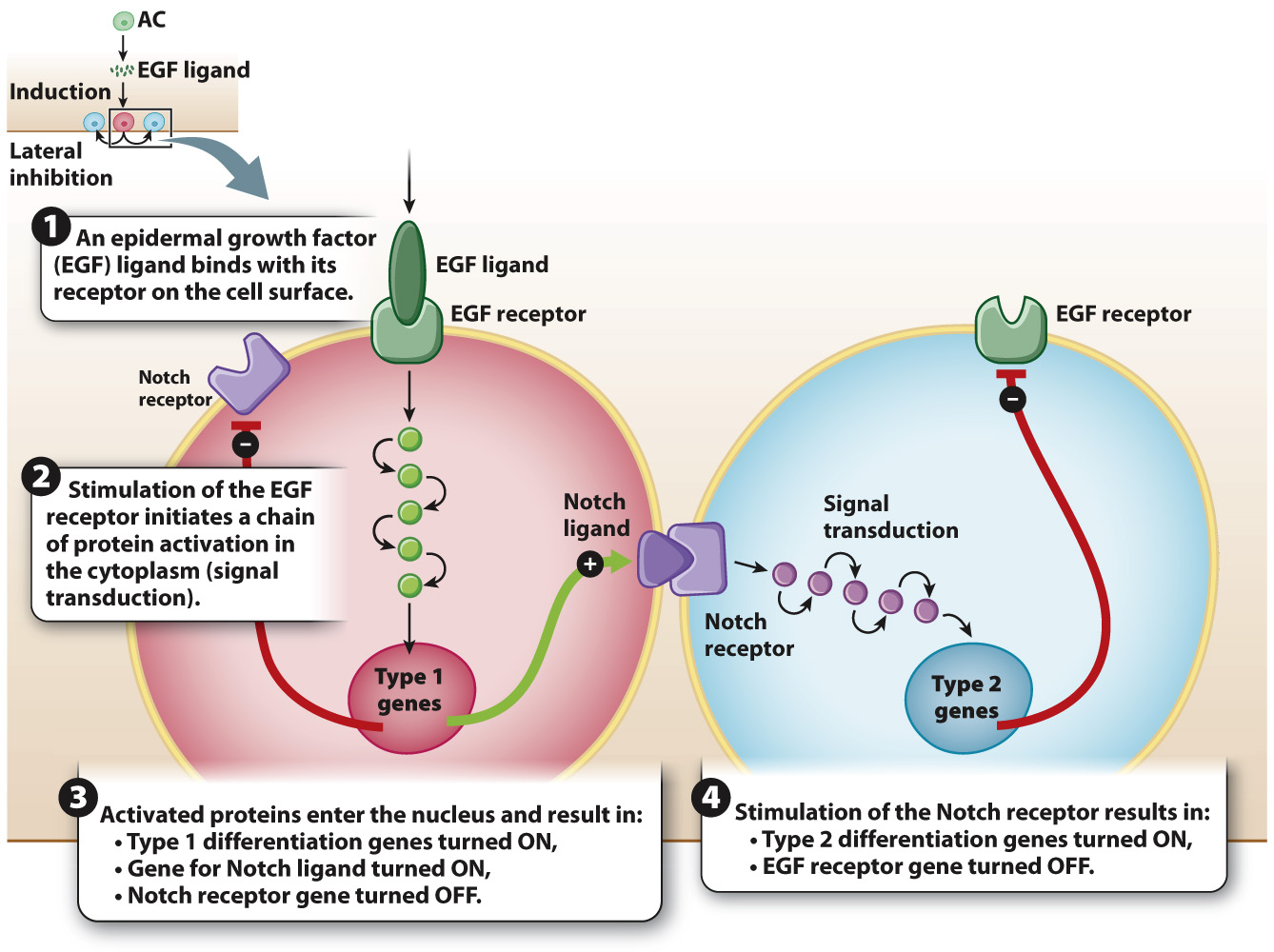Developmental signals are amplified and expanded.
How can a single ligand–

In the nucleus, the transcription factors activate transcription of genes for type 1 differentiation. The transcription factors also activate transcription of genes that prevent type 1 differentiation in neighboring cells, including the genes that produce another type of protein ligand, called Notch. The Notch ligand is a transmembrane protein that activates Notch receptors in the neighboring cells. Activation of the Notch receptor in these cells activates a signal transduction cascade in these cells, which results in transcription of the genes for type 2 differentiation. The cascade started by the binding of Notch also activates transcription of other genes whose products inhibit the EGF receptor. Inhibiting the EGF receptor in type 2 cells prevents EGF from eliciting a type 1 response in the type 2 cell. In addition, at the same time that the type 1 cell produces the Notch ligand, it produces proteins that inhibit its own Notch receptors, and this prevents Notch from initiating a type 2 response in the type 1 cell.
While vulva development in nematodes is a fairly simple example of the importance of ligand–
Therefore, just as we saw in our discussion of eye and flower development, the molecular players involved in development are often evolutionarily conserved across a wide range of organisms. This is true even of genes that we typically associate with disease, such as BRCA1 and BRCA2 and their link with cancer. These genes not only play a role in cell cycle control in the adult, but also in early development in many organisms. In fact, although heterozygous mutations in these genes predispose individuals to breast and ovarian cancers in humans, homozygous mutations are lethal in early embryonic stages. In Fig. 20.26, we focus on the BRCA1 gene to summarize key concepts about DNA replication, mutation, genetic variation, inheritance, gene regulation, and development.
VISUAL SYNTHESIS
